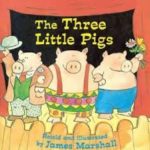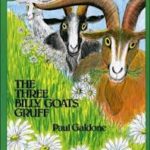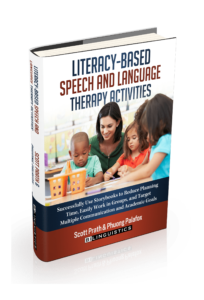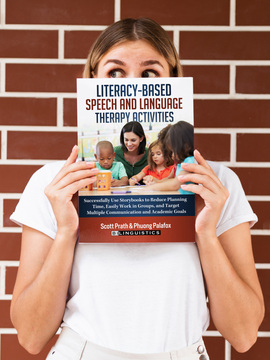The way a child organizes his stories, the content he includes, and the meaning projected all vary as a result of cultural and linguistic influences. The way children use narrative elements is culturally specific. Organization, content, and meaning create a narrative structure that is part of every language. However, this universal nature only goes so far in explaining the broader components of a narrative.
Narrative development has been shown to be highly significant in the acquisition of complex language and literacy skills. Comprehension of large tasks, sequencing, interpretation of time-ordered events, and expository skills all require some skill that has been developed along with narrative abilities. Studies that have primarily focused on English-speaking monolinguals suggest that narrative development can reveal basic elements of academic readiness (Gutierrez-Clellen 2002). The cultural influences in children’s narratives can play a large role in classroom success.
Let’s start by answering some of the most common questions such as how age, language, and socio-economic status affect story-telling. At the bottom, we have included a great chart to help you note the differences between Spanish and English narratives.
How does narrative development change as a child gets older?
A natural increase in complexity is evident in different aspects of a story’s composition. Clausal compliments (We thought that they were coming.) expand from simple to complex. Stories transition from being egocentric (I liked it) to awareness of other characters’ thoughts (He was angry). Understanding of time is even relative to narrative development as a child moves from present-tense stories to working in the past. The majority of the research that provides an explanation of narrative development is specific to one language, English. If narratives develop differently among different cultural and language groups, then criteria that have been developed for English may not be accurate for evaluating the non-mainstream population.
How can differences in narrative ability affect academic performance?
Spanish-speaking children often perform more poorly than monolingual children on national indicators of achievement. The disparity between success rates of cultural groups may be the result of the testing criteria and not indicative of the Spanish-speaking population’s story telling abilities or other academic abilities. The tests include identifying facts from written passages, making inferences from passages, searching for specific information from a passage, and meshing ideas (Gutierrez-Clellen, 2002). It is expected for a child use the text and his or her own world knowledge to answer the questions. When a child’s personal knowledge differs from that of mainstream America, it can only be expected that a discourse, story recount, or story telling will not match the standards currently used in assessing narrative ability.
Do we ask children to tell stories differently than their parents?

In a study on cultural variations in the construction of personal narratives, Metzi (2000) examined narrative elicitation styles of Spanish-speaking Central American mothers and English-speaking mothers with European origin. The results showed that the two groups differed in how they elicited a story, as well as what aspects of the narrative they chose to emphasize. European American mothers primarily focused on the organizational aspects of the narrative. The Central American mothers emphasized the conversational aspects of the narrative. The Spanish-speaking children had greater responsibility in recalling the story as their mothers played a listening role in the conversation. This is in contrast to the English-speaking children who acted as co-narrators with their parents. Metzi concludes that the elicitation styles correspond to socialization goals of each culture. This suggests that conversational patterns are inherently different based on cultural demands (Metzi 2000).
How does socio-economic status (SES) affect narratives?
Use of listener feedback and critique (evaluative talk) is the basis for learning competent story telling. In a study of Venezuelan school children, Shiro (1998) sought to identify whether or not appropriate use of evaluative talk differed across age, gender, and class. Evaluative feedback was studied in the creation of fictional and personal narratives. Shiro found that evaluative language varied considerably with age and social class. The stories expanded in correlation with an increase in age. Not only did stories improve with social status, but it was also noted that children of a lower social class had difficulty even producing fictional narratives (Shiro, 1998).
How does the grammar of each language affect story telling?
Cultural Influences in children’s narratives can affect Differences in narrative type extend past what is purely influenced by culture. Grammatical variations can also be dictated by rules or sentiments of a host language. A study of Spanish and English highlights a multitude of these differences. Morphologically, English conveys variations in meaning by manipulation of word order. To accomplish the same task, Spanish relies on the inflection of the morphemes. Syntactically, Spanish employs verb forms not often used in English to show conditionality or actions that have continued from the past. Spanish also enjoys more flexibility in word order. With the large culmination of differences, Silliman and colleagues (2002) noted that the application of Spanish or English monolingual norms to a group of bilingual children would be inappropriate, whether for research, educational, or clinical purposes.
Narrative Elements that are Culturally Specific
|
|
Spanish |
English |
Goal of most narratives | Moral themes. Spanish-speaking children may use an event to demonstrate a sense of themselves in relation to their community. | Individualistic/child-centered themes. English narratives focus on what is happening internally and externally to the main character. |
Reaction | A character’s reaction to an event or element may be atypical. | A character’s reaction to an event or atypical story element is predictive. |
Story Elicitation | Mothers emphasize the conversational aspects of the narrative. The Spanish-speaking children have greater responsibility in recalling the story as their mothers play a listening role in the conversation. | Mothers primarily focus on the organizational aspects of the narrative and English-speaking children may act as co-narrators with their parents. |
Grammar – meaning | Spanish relies heavily on verb inflections. | English relies on manipulation of word order. |
Grammar – syntax | Spanish will employ verb forms not often used in English to show conditionality or actions that have continued from the past. Spanish also enjoys more flexibility in word order. | |
Acting as a listener or a participant | Spanish-speaking cultures often have the role of speaker or listener and may not simultaneously engage. | English-speaking cultures may tell a story together, ask questions, or interject during a story. |
Through studies on race, culture, gender, socio-economic status, and educational experience, we are increasingly able to understand differences that govern the students that we serve. Our job as professionals in special education is to identify if a student is performing academically at an expected grade level. When this is not the case, we identify how we can intervene to bring the performance up to grade level. Much of how we diagnose and intervene is based on our appraisal of the narrative that a student generates. We can account for cultural, economic, and language influences in order to help us understand what should actually be present in a child’s story.
References
Content for this essay adapted from Literacy-Based Speech and Language Activities. Use it to learn how to create powerful language therapy using predictable books.









It is interesting and useful for children for socio-academic basis and to understand cultural specific knowledge
You are right Sherley. Our experiences influence how we share our knowledge, tell stories, and interact as a participant when hearing a story or just as a listener. Our job in essence is easier. We just listen to stories and make sure all the parts are there (intro, characters, setting, etc) and not judge how they are arranged or what form they might take. Thanks for commenting!